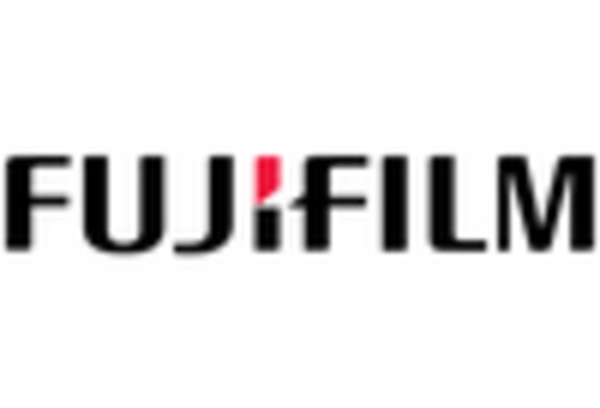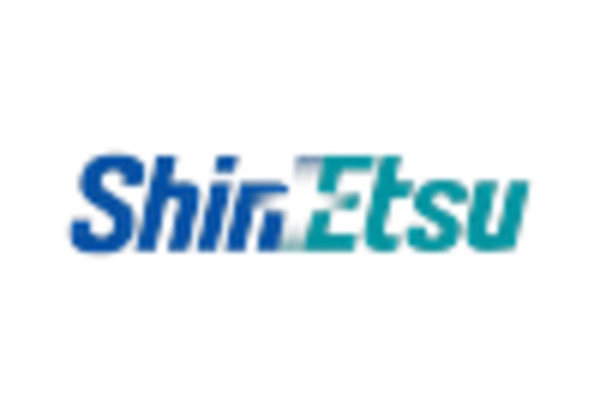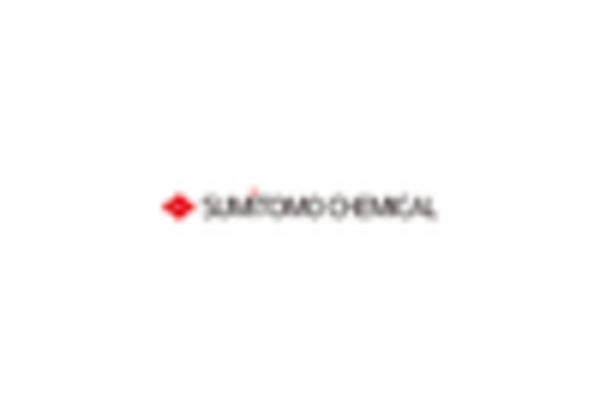-
EXECUTIVE SUMMARY
-
MARKET INTRODUCTION
-
Definition
-
Scope of the Study
- Research Objective
- Assumptions
- Limitations
-
RESEARCH METHODOLOGY
-
Overview
-
Data Mining
-
Secondary Research
-
Primary Research
- Primary Interviews
- Breakdown of Primary Respondents
-
and Information Gathering Process
-
Forecasting Modality
-
Market Size Estimation
- Bottom-Up Approach
- Top-Down Approach
-
Data Triangulation
-
Validation
-
MARKET DYNAMICS
-
Overview
-
Drivers
-
Restraints
-
Opportunities
-
MARKET FACTOR ANALYSIS
-
Value Chain Analysis
-
Porter’s Five Forces Analysis
- Bargaining Power
- Threat of New Entrants
- Threat of Substitutes
- Intensity of Rivalry
-
of Suppliers
-
5.2.2.
-
Bargaining Power of Buyers
-
COVID-19 Impact Analysis
- Market Impact Analysis
- Regional Impact
- Opportunity and
-
Threat Analysis
-
6.
-
GLOBAL WET CHEMICALS FOR ELECTRONICS SEMICONDUCTOR APPLICATION MARKET, BY PRODUCT
-
Overview
-
Acetic Acid
-
Hydrogen Peroxide
-
Hydrochloric Acid
-
Ammonium Hydroxide
-
Nitric Acid
-
Sulfuric Acid
-
Phosphoric Acid
-
Others
-
GLOBAL WET CHEMICALS
-
FOR ELECTRONICS SEMICONDUCTOR APPLICATION MARKET, BY APPLICATION
-
Overview
-
Cleaning
-
Etching
-
Printed Circuit Board Manufacturing
-
Integrated Circuit
-
Others
-
GLOBAL WET CHEMICALS
-
FOR ELECTRONICS SEMICONDUCTOR APPLICATION MARKET, BY REGION
-
Overview
-
North America
- U.S.
- Canada
-
Europe
- Germany
- France
- U.K
- Italy
- Spain
- Rest of Europe
-
Asia-Pacific
- China
- India
- Japan
- South Korea
- Australia
- Rest of Asia-Pacific
-
Rest of the World
- Middle East
- Africa
- Latin America
-
COMPETITIVE LANDSCAPE
-
Overview
-
Competitive Analysis
-
Market Share Analysis
-
Major Growth Strategy in the Global Wet chemicals
-
for electronics semiconductor application Market,
-
Competitive Benchmarking
-
Leading Players in Terms of Number of Developments
-
in the Global Wet chemicals for electronics semiconductor application Market,
-
Key developments
- Merger & Acquisitions
- Joint Ventures
-
and Growth Strategies
-
9.7.1.
-
New PRODUCT Launch/Application Deployment
-
Major Players Financial
- Major Players R&D Expenditure. 2022
-
Matrix
-
9.8.1.
-
Sales & Operating Income, 2022
-
COMPANY PROFILES
-
BASF SE
- Company Overview
- Financial Overview
- Product Offered
- Key Developments
- SWOT Analysis
- Key Strategies
-
Honeywell International
- Company Overview
- Financial Overview
- Product Offered
- Key Developments
- SWOT Analysis
- Key Strategies
-
LLC
-
10.2.1.
-
Company Overview
-
10.2.2.
-
Financial Overview
-
10.2.3.
-
Product Offered
-
10.2.4.
-
Key Developments
-
10.2.5.
-
SWOT Analysis
-
10.2.6.
-
Key Strategies
-
10.3.
-
Eastman Chemical Company
-
Solvay
- Company Overview
- Financial Overview
- Product Offered
- Key Developments
- SWOT Analysis
- Key Strategies
-
Avantor Inc.
- Company Overview
- Financial Overview
- Product Offered
- Key Developments
- SWOT Analysis
- Key Strategies
-
Fujifilm Corporation
- Company Overview
- Financial Overview
- Product Offered
- Key Developments
- SWOT Analysis
- Key Strategies
-
Kanto Chemical Co. Inc.
- Company Overview
- Financial Overview
- Product Offered
- Key Developments
- SWOT Analysis
- Key Strategies
-
T.N.C. Industrial Co. Ltd
- Company Overview
- Financial Overview
- Product Offered
- Key Developments
- SWOT Analysis
- Key Strategies
-
APPENDIX
-
References
-
Related Reports
-
-
LIST OF TABLES
-
GLOBAL WET CHEMICALS
-
FOR ELECTRONICS SEMICONDUCTOR APPLICATION MARKET, SYNOPSIS, 2025 - 2034
-
GLOBAL WET CHEMICALS
-
FOR ELECTRONICS SEMICONDUCTOR APPLICATION MARKET, ESTIMATES & FORECAST, 2025
-
- 2034 (USD BILLION)
-
TABLE
-
GLOBAL WET CHEMICALS FOR ELECTRONICS SEMICONDUCTOR APPLICATION MARKET, BY PRODUCT,
-
GLOBAL WET CHEMICALS FOR ELECTRONICS SEMICONDUCTOR APPLICATION
-
MARKET, BY APPLICATION, 2025 - 2034 (USD BILLION)
-
NORTH AMERICA WET CHEMICALS FOR ELECTRONICS
-
SEMICONDUCTOR APPLICATION MARKET, BY PRODUCT, 2025 - 2034 (USD BILLION)
-
NORTH AMERICA
-
WET CHEMICALS FOR ELECTRONICS SEMICONDUCTOR APPLICATION MARKET, BY APPLICATION,
-
NORTH AMERICA WET CHEMICALS FOR ELECTRONICS SEMICONDUCTOR APPLICATION
-
MARKET, BY COUNTRY, 2025 - 2034 (USD BILLION)
-
U.S. WET CHEMICALS FOR ELECTRONICS SEMICONDUCTOR
-
APPLICATION MARKET, BY PRODUCT, 2025 - 2034 (USD BILLION)
-
U.S. WET CHEMICALS FOR ELECTRONICS SEMICONDUCTOR
-
APPLICATION MARKET, BY APPLICATION, 2025 - 2034 (USD BILLION)
-
CANADA WET CHEMICALS
-
FOR ELECTRONICS SEMICONDUCTOR APPLICATION MARKET, BY PRODUCT, 2025 - 2034 (USD BILLION)
-
CANADA WET CHEMICALS
-
FOR ELECTRONICS SEMICONDUCTOR APPLICATION MARKET, BY APPLICATION, 2025 - 2034 (USD
-
BILLION)
-
TABLE
-
EUROPE WET CHEMICALS FOR ELECTRONICS SEMICONDUCTOR APPLICATION MARKET, BY PRODUCT,
-
EUROPE WET CHEMICALS FOR ELECTRONICS SEMICONDUCTOR APPLICATION
-
MARKET, BY APPLICATION, 2025 - 2034 (USD BILLION)
-
EUROPE WET CHEMICALS FOR ELECTRONICS SEMICONDUCTOR
-
APPLICATION MARKET, BY COUNTRY, 2025 - 2034 (USD BILLION)
-
GERMANY WET CHEMICALS FOR ELECTRONICS SEMICONDUCTOR
-
APPLICATION MARKET, BY PRODUCT, 2025 - 2034 (USD BILLION)
-
GERMANY WET CHEMICALS FOR ELECTRONICS SEMICONDUCTOR
-
APPLICATION MARKET, BY APPLICATION, 2025 - 2034 (USD BILLION)
-
FRANCE WET CHEMICALS
-
FOR ELECTRONICS SEMICONDUCTOR APPLICATION MARKET, BY PRODUCT, 2025 - 2034 (USD BILLION)
-
FRANCE WET CHEMICALS
-
FOR ELECTRONICS SEMICONDUCTOR APPLICATION MARKET, BY APPLICATION, 2025 - 2034 (USD
-
BILLION)
-
TABLE
-
ITALY WET CHEMICALS FOR ELECTRONICS SEMICONDUCTOR APPLICATION MARKET, BY PRODUCT,
-
ITALY WET CHEMICALS FOR ELECTRONICS SEMICONDUCTOR APPLICATION
-
MARKET, BY APPLICATION, 2025 - 2034 (USD BILLION)
-
SPAIN WET CHEMICALS FOR ELECTRONICS SEMICONDUCTOR
-
APPLICATION MARKET, BY PRODUCT, 2025 - 2034 (USD BILLION)
-
SPAIN WET CHEMICALS FOR ELECTRONICS SEMICONDUCTOR
-
APPLICATION MARKET, BY APPLICATION, 2025 - 2034 (USD BILLION)
-
U.K WET CHEMICALS FOR
-
ELECTRONICS SEMICONDUCTOR APPLICATION MARKET, BY PRODUCT, 2025 - 2034 (USD BILLION)
-
U.K WET CHEMICALS
-
FOR ELECTRONICS SEMICONDUCTOR APPLICATION MARKET, BY APPLICATION, 2025 - 2034 (USD
-
BILLION)
-
TABLE
-
REST OF EUROPE WET CHEMICALS FOR ELECTRONICS SEMICONDUCTOR APPLICATION MARKET,
-
BY PRODUCT, 2025 - 2034 (USD BILLION)
-
REST OF EUROPE WET CHEMICALS FOR ELECTRONICS SEMICONDUCTOR
-
APPLICATION MARKET, BY APPLICATION, 2025 - 2034 (USD BILLION)
-
ASIA PACIFIC WET CHEMICALS
-
FOR ELECTRONICS SEMICONDUCTOR APPLICATION MARKET, BY PRODUCT, 2025 - 2034 (USD BILLION)
-
ASIA PACIFIC
-
WET CHEMICALS FOR ELECTRONICS SEMICONDUCTOR APPLICATION MARKET, BY APPLICATION,
-
ASIA PACIFIC WET CHEMICALS FOR ELECTRONICS SEMICONDUCTOR APPLICATION
-
MARKET, BY COUNTRY, 2025 - 2034 (USD BILLION)
-
JAPAN WET CHEMICALS FOR ELECTRONICS SEMICONDUCTOR
-
APPLICATION MARKET, BY PRODUCT, 2025 - 2034 (USD BILLION)
-
JAPAN WET CHEMICALS FOR ELECTRONICS SEMICONDUCTOR
-
APPLICATION MARKET, BY APPLICATION, 2025 - 2034 (USD BILLION)
-
CHINA WET CHEMICALS
-
FOR ELECTRONICS SEMICONDUCTOR APPLICATION MARKET, BY PRODUCT, 2025 - 2034 (USD BILLION)
-
CHINA WET CHEMICALS
-
FOR ELECTRONICS SEMICONDUCTOR APPLICATION MARKET, BY APPLICATION, 2025 - 2034 (USD
-
BILLION)
-
TABLE
-
INDIA WET CHEMICALS FOR ELECTRONICS SEMICONDUCTOR APPLICATION MARKET, BY PRODUCT,
-
INDIA WET CHEMICALS FOR ELECTRONICS SEMICONDUCTOR APPLICATION
-
MARKET, BY APPLICATION, 2025 - 2034 (USD BILLION)
-
AUSTRALIA WET CHEMICALS FOR ELECTRONICS
-
SEMICONDUCTOR APPLICATION MARKET, BY PRODUCT, 2025 - 2034 (USD BILLION)
-
AUSTRALIA WET
-
CHEMICALS FOR ELECTRONICS SEMICONDUCTOR APPLICATION MARKET, BY APPLICATION, 2025
-
- 2034 (USD BILLION)
-
TABLE
-
SOUTH KOREA WET CHEMICALS FOR ELECTRONICS SEMICONDUCTOR APPLICATION MARKET, BY
-
PRODUCT, 2025 - 2034 (USD BILLION)
-
SOUTH KOREA WET CHEMICALS FOR ELECTRONICS SEMICONDUCTOR
-
APPLICATION MARKET, BY APPLICATION, 2025 - 2034 (USD BILLION)
-
REST OF ASIA-PACIFIC
-
WET CHEMICALS FOR ELECTRONICS SEMICONDUCTOR APPLICATION MARKET, BY PRODUCT, 2025
-
- 2034 (USD BILLION)
-
TABLE
-
REST OF ASIA-PACIFIC WET CHEMICALS FOR ELECTRONICS SEMICONDUCTOR APPLICATION
-
MARKET, BY APPLICATION, 2025 - 2034 (USD BILLION)
-
REST OF WORLD WET CHEMICALS FOR ELECTRONICS
-
SEMICONDUCTOR APPLICATION MARKET, BY PRODUCT, 2025 - 2034 (USD BILLION)
-
REST OF WORLD
-
WET CHEMICALS FOR ELECTRONICS SEMICONDUCTOR APPLICATION MARKET, BY APPLICATION,
-
REST OF WORLD WET CHEMICALS FOR ELECTRONICS SEMICONDUCTOR
-
APPLICATION MARKET, BY COUNTRY, 2025 - 2034 (USD BILLION)
-
MIDDLE EAST WET CHEMICALS FOR ELECTRONICS
-
SEMICONDUCTOR APPLICATION MARKET, BY PRODUCT, 2025 - 2034 (USD BILLION)
-
MIDDLE EAST
-
WET CHEMICALS FOR ELECTRONICS SEMICONDUCTOR APPLICATION MARKET, BY APPLICATION,
-
AFRICA WET CHEMICALS FOR ELECTRONICS SEMICONDUCTOR APPLICATION
-
MARKET, BY PRODUCT, 2025 - 2034 (USD BILLION)
-
AFRICA WET CHEMICALS FOR ELECTRONICS SEMICONDUCTOR
-
APPLICATION MARKET, BY APPLICATION, 2025 - 2034 (USD BILLION)
-
LATIN AMERICA WET CHEMICALS
-
FOR ELECTRONICS SEMICONDUCTOR APPLICATION MARKET, BY PRODUCT, 2025 - 2034 (USD BILLION)
-
LATIN AMERICA
-
WET CHEMICALS FOR ELECTRONICS SEMICONDUCTOR APPLICATION MARKET, BY APPLICATION,
-
-
LIST
-
OF FIGURES
-
FIGURE
-
RESEARCH PROCESS
-
FIGURE
-
MARKET STRUCTURE FOR THE GLOBAL WET CHEMICALS FOR ELECTRONICS SEMICONDUCTOR APPLICATION
-
MARKET
-
FIGURE
-
MARKET DYNAMICS FOR THE GLOBAL WET CHEMICALS FOR ELECTRONICS SEMICONDUCTOR APPLICATION
-
MARKET
-
FIGURE
-
GLOBAL WET CHEMICALS FOR ELECTRONICS SEMICONDUCTOR APPLICATION MARKET, SHARE (%),
-
BY PRODUCT, 2022
-
FIGURE
-
GLOBAL WET CHEMICALS FOR ELECTRONICS SEMICONDUCTOR APPLICATION MARKET, SHARE (%),
-
BY APPLICATION, 2022
-
FIGURE
-
GLOBAL WET CHEMICALS FOR ELECTRONICS SEMICONDUCTOR APPLICATION MARKET, SHARE (%),
-
BY REGION, 2022
-
FIGURE
-
NORTH AMERICA: WET CHEMICALS FOR ELECTRONICS SEMICONDUCTOR APPLICATION MARKET,
-
SHARE (%), BY REGION, 2022
-
EUROPE: WET CHEMICALS FOR ELECTRONICS SEMICONDUCTOR APPLICATION
-
MARKET, SHARE (%), BY REGION, 2022
-
ASIA-PACIFIC: WET CHEMICALS FOR ELECTRONICS SEMICONDUCTOR
-
APPLICATION MARKET, SHARE (%), BY REGION, 2022
-
REST OF THE WORLD: WET CHEMICALS FOR ELECTRONICS
-
SEMICONDUCTOR APPLICATION MARKET, SHARE (%), BY REGION, 2022
-
GLOBAL WET CHEMICALS
-
FOR ELECTRONICS SEMICONDUCTOR APPLICATION MARKET: COMPANY SHARE ANALYSIS, 2022 (%)
-
BASF SE: FINANCIAL
-
OVERVIEW SNAPSHOT
-
FIGURE
-
BASF SE: SWOT ANALYSIS
-
HONEYWELL INTERNATIONAL LLC: FINANCIAL OVERVIEW SNAPSHOT
-
HONEYWELL INTERNATIONAL
-
LLC: SWOT ANALYSIS
-
FIGURE
-
EASTMAN CHEMICAL COMPANY: FINANCIAL OVERVIEW SNAPSHOT
-
EASTMAN CHEMICAL COMPANY: SWOT ANALYSIS
-
SOLVAY: FINANCIAL
-
OVERVIEW SNAPSHOT
-
FIGURE
-
SOLVAY: SWOT ANALYSIS
-
AVANTOR INC..: FINANCIAL OVERVIEW SNAPSHOT
-
AVANTOR INC..: SWOT
-
ANALYSIS
-
FIGURE
-
FUJIFILM CORPORATION: FINANCIAL OVERVIEW SNAPSHOT
-
FUJIFILM CORPORATION: SWOT ANALYSIS
-
KANTO CHEMICAL
-
CO. INC.: FINANCIAL OVERVIEW SNAPSHOT
-
KANTO CHEMICAL CO. INC.: SWOT ANALYSIS
-
T.N.C. INDUSTRIAL
-
CO. LTD : FINANCIAL OVERVIEW SNAPSHOT
-
T.N.C. INDUSTRIAL CO. LTD : SWOT ANALYSIS








Leave a Comment